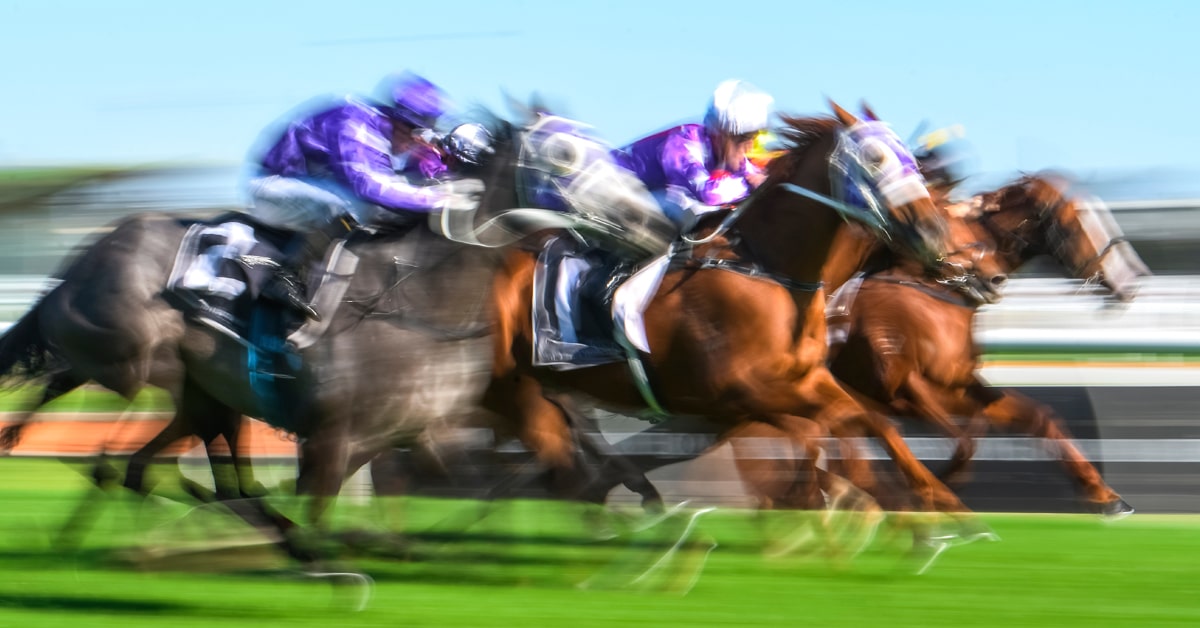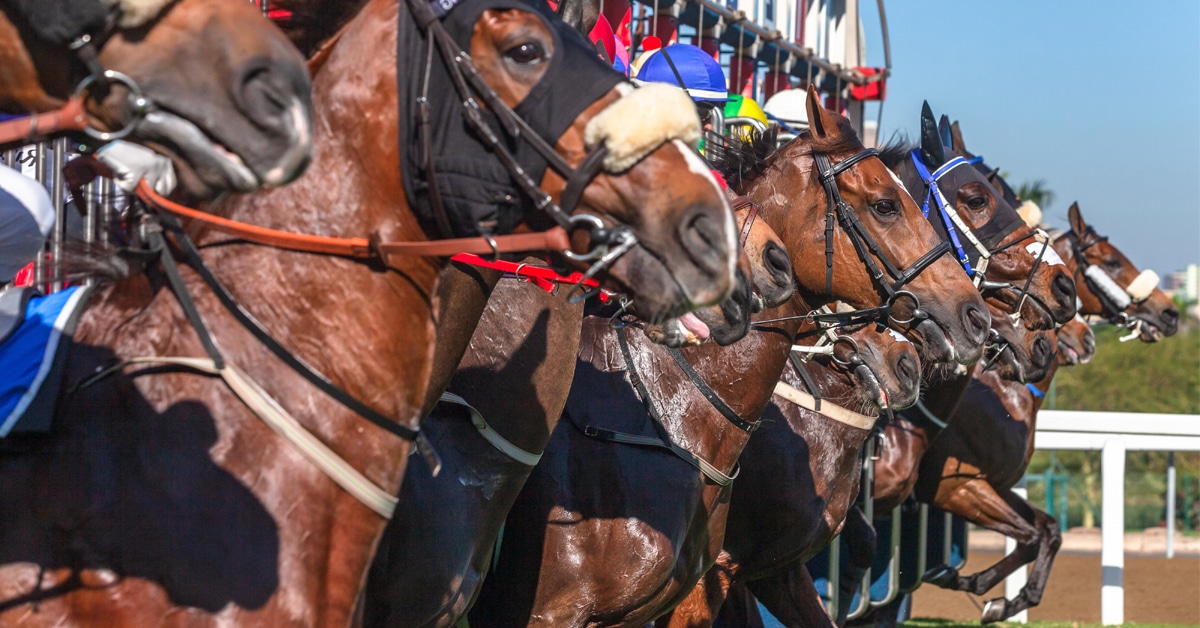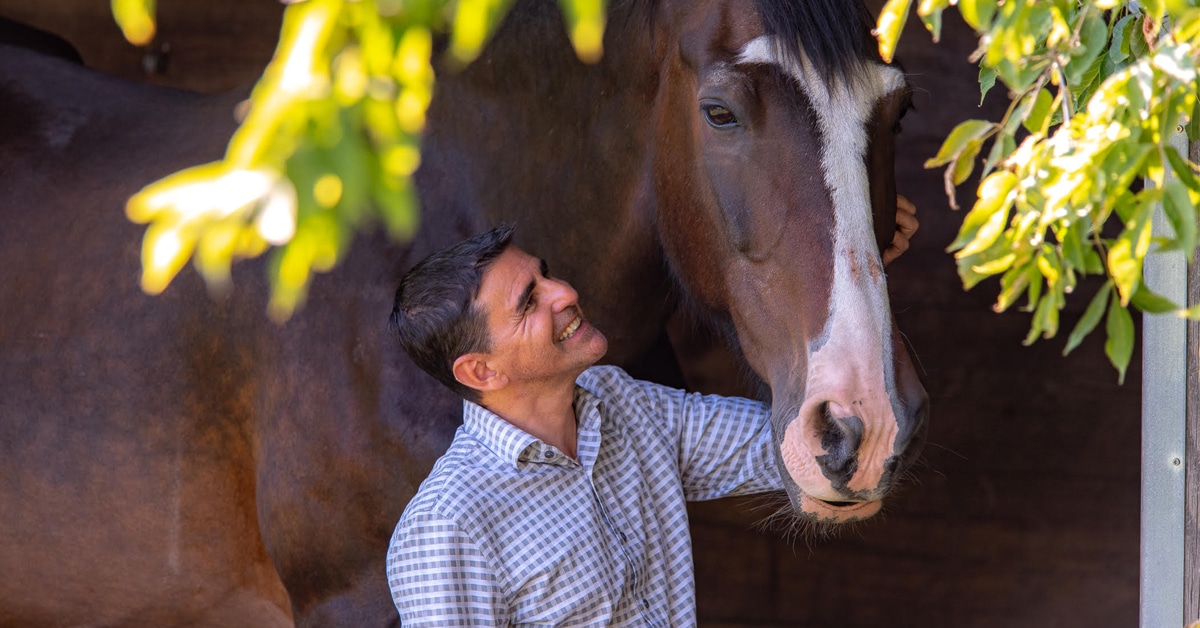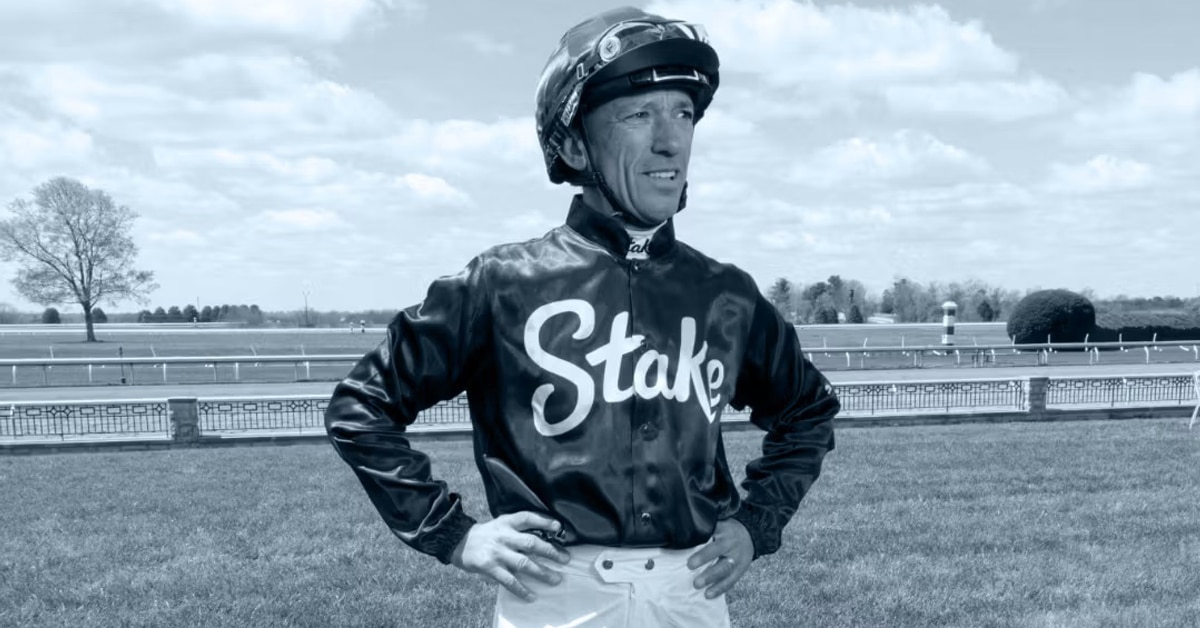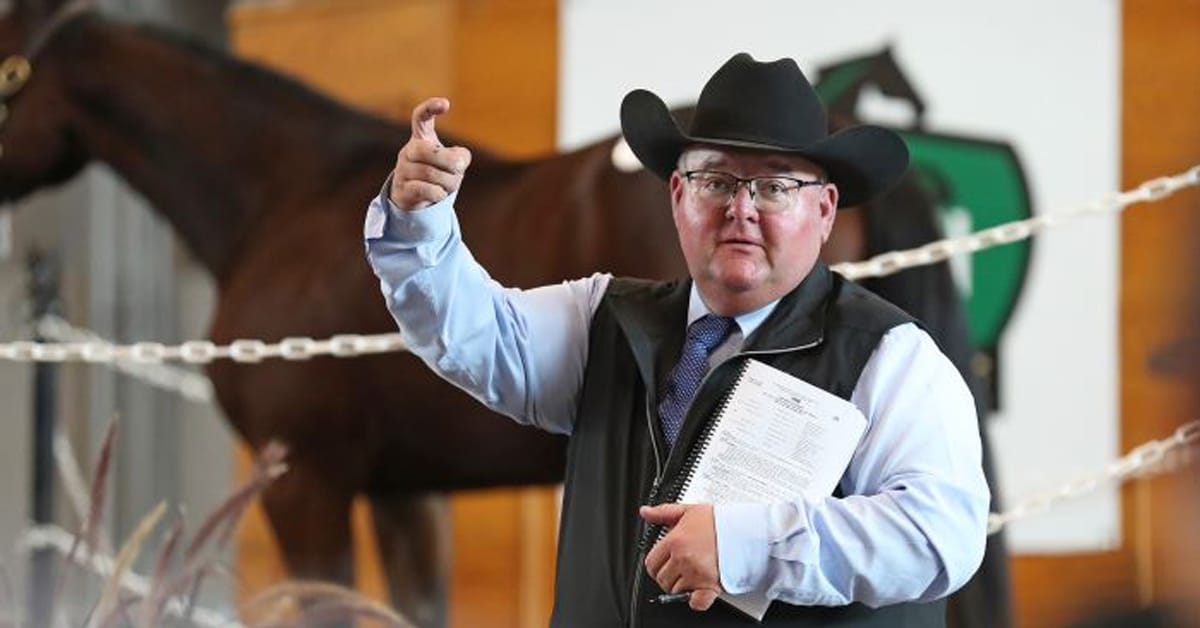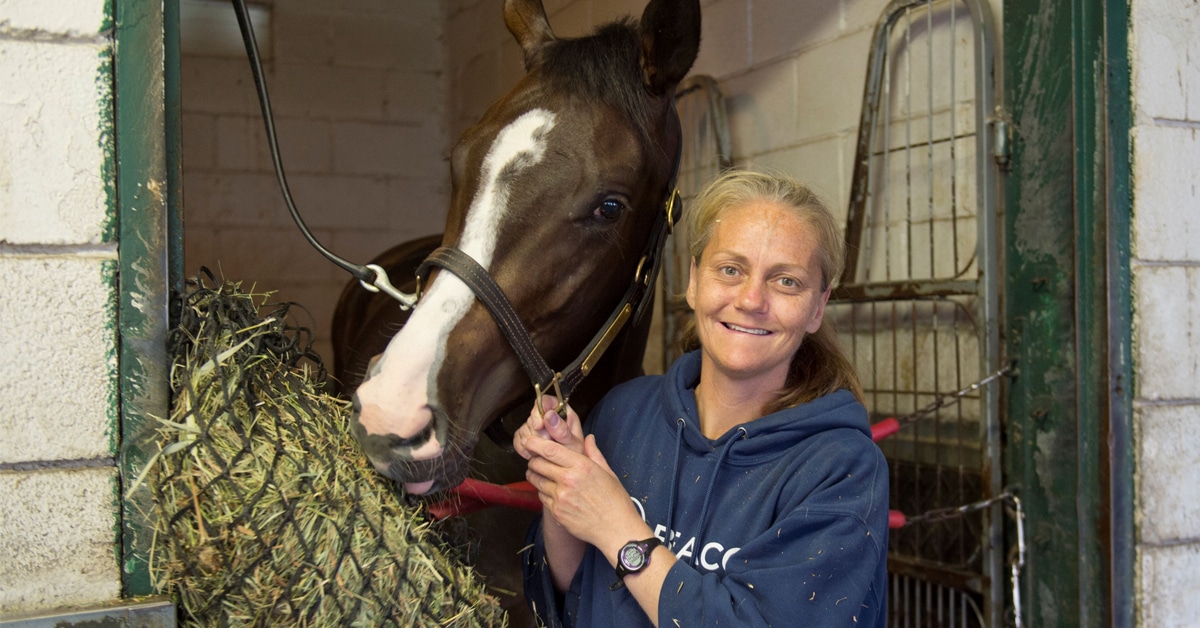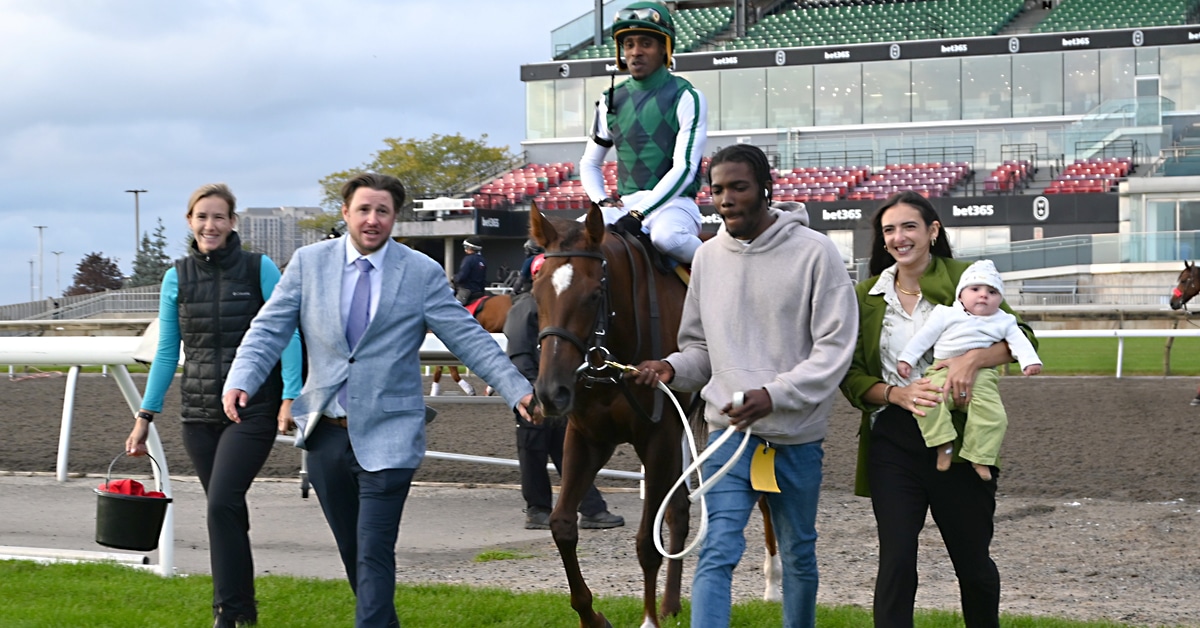Prior to getting back to the demands of regular exercise, horses should undergo a complete health check. A visual and a hands-on inspection should be done to determine the overall physical condition of each horse, and the weight and muscle-tone of each horse should be recorded. Since racing requires much higher energy levels than off-season rest, pre-training feeding regimes need to be created based on each horse’s condition – with levels of protein, roughage and supplements varying according individual weight. Radical changes in diet can cause stomach ulcers or colic so, ideally, richer food should be introduced gradually over a period of weeks, rather than days, before training begins.
During the hands-on health check, any areas of swelling or soreness should be identified and noted in a horse’s training record. Particular attention should be given to the general appearance and condition of the legs and the lumbar muscles on either side of the spine. Many professional training facilities have chiropractic and physiotherapy specialists onsite to work out winter kinks, and returning campaigners often befit from some form of physiotherapy that targets old injuries or strains before beginning intensive training sessions. More serious swelling, chronic soreness, cramping or pain should undergo a full medical diagnosis before any type of exercise is undertaken.
Horses should also be dewormed and have their teeth inspected as part of their spring routine, and pre-training health checks should include administering vaccinations and Coggins testing.
More intensive health checks can include measuring body temperature, heart rate and respiration rates to establish an individual’s baseline numbers and many trainers will opt for a veterinary scope of nasal passages and lungs to ensure that airways are clear and healthy. Full and comprehensive blood-testing is also advisable to, again, establish baseline measurements for important indicators such as oxygen levels, iron levels and white blood cell count. Bloodwork can also screen for illnesses such as pneumonia which can occur during long periods of damp, cold weather but doesn’t always cause obvious symptoms.
HOOF CARE IN THE SPRING
A horse’s feet don’t grow as fast in cold weather as they do when temperatures are warmer, but winter can wreak havoc on hooves nonetheless. Bruised soles from hard or icy ground aren’t uncommon, and typically racehorses will need one or two trims to get feet back into good exercise form before spring training.
Spring-time footing itself is extremely challenging since turnout enclosures, training tracks and even trailer ramps can offer anything from hard frost to slick ice to sticky mud on any given day. Some trainers will put rubber pads on under shoes to prevent bruised soles, but the choice of shoes will likely depend on the horse’s training location. One of the most crucial aspects of spring training foot care is keeping hooves dry. When the outer covering of the foot is too damp it can readily crack or split, and the sole becomes prone to infection by anaerobic bacteria. Feet and legs should be dried thoroughly after every workout and washed and dried daily when the training track or turnout is muddy. For long periods of damp and muddy footing, a good coating of hoof dressing or Vaseline (especially on the bulbs of the heels and up the back of pastern) and the use of bell boots can be helpful.
TRAINING IN TEMPERATURE HIGHS AND LOWS
Horses are well-adapted to cold weather. Their digestive systems are designed to release heat as roughage is broken down and absorbed by the body, and their winter hair grows in such a way as to create insulating warmth. Exercise in cold weather doesn’t present an inherent problem for horses if they are given adequate time to warm-up and cool-down before and after a strenuous workout. In fact, more often that not, cool weather invigorates horses and gives them a bit of ‘attitude’.
Cold-weather trouble can come when horses are not thoroughly dried out after exercise. Damp coats can not only breed fungal and bacterial infections on the skin but can negatively impact the immune system. In other words, cold, wet horses can catch colds. If still sporting a heavy winter coat, a horse may need to be clipped to help cut down drying time after exercise. However, clipped horses will need blanketing if housed in an unheated stable or turned out in cold weather. Horses that do not receive enough food to compensate for the energy lost maintaining body warmth and expending during exercise are prone to infection. Roughage feed levels need to be increased when heavy exercise is demanded on cold days for all horses – clipped or unclipped.
More importantly, cold-weather exercise on windy days requires as much hydration as hot-weather exercise. With prolonged exercise, water intake can increase by 300 per cent and sweat evaporation speeds up in direct relation to wind strength. Since sweat production involves the conversion of body fluids the loss of electrolytes and blood volume, the more a horse sweats, the more fatigued he becomes. Fatigue increases the likelihood of illness, injury, and when combined with dehydration, impaction colic. Moreover, dehydration fatigue can lengthen exercise recovery time by two to three days.
Hydration is obviously an important component for hot-weather exercise, too. Horses are adept at handling high ambient temperatures through physiological specializations such as lathering – a surface protein that makes horses foamy, thereby allowing the sweat to penetrate the waterproof coat and speeding evaporation. Warm temperatures have a positive effect on muscles and respiration, as well as track surfaces and turnout footing.
What is difficult for horses are sudden temperature spikes that we seem to be seeing more often during springtime in Canada. Scientific studies have shown that it takes, on average, two weeks for horses in peak athletic condition to acclimatize to hot weather and that sudden increases in daily temperatures put pressure on the heart and respiration rate of horses during strenuous exercise. Shifts up or down in temperature more than 15 degrees within a 48-hour period have also been proven to detrimentally affect body temperature regulation and appetite and, once again, infection rates tend to increase in direct correlation rapid ambient temperature.
To keep horses healthy and sound during the spring, trainers should make allowances for temperature or weather conditions and factor-in possible delays to their training timeline. Time on an indoor walker might not ideal, but it’s better that than lose a week to sickness.
A WORD ABOUT RESPIRATION IN RACEHORSES
Research conducted by the Ontario Veterinary College (OVC) at the University of Guelph, has concluded that the presence of Inflammatory Airway Disease (IAD) in racehorse populations is far more common than previously thought. With IAD, the tissues of the trachea and lungs become inflamed. Unlike asthma, where the inflammation typically subsides with removal of the irritant and/or medication, with IAD the inflammation is persistent.
For horses with IAD, or that are prone to asthma (heaves), pneumonia or are ‘bleeders’ (horses that suffer from exercise-induce pulmonary hemorrhage (EIPH)), strenuous spring-time exercise can exacerbate breathing issues. Whether it is cold, damp days, or high pollen counts on warm and sunny days, horses with chronic pulmonary conditions can readily lose condition or become ill during spring training. Specialized medical and exercise management will be needed avoid sickness lay-ups. Trainers can help by shifting exercise times or by varying exercise intensity according to weather conditions. It is also advisable to ensure that stall bedding and barn ventilation are as irritant free as possible. Always consult with a veterinarian about ongoing treatment options and be sure to review permitted drug regulations jurisdictions where a heaves-prone horses or bleeders are slated to race.
The Latest
